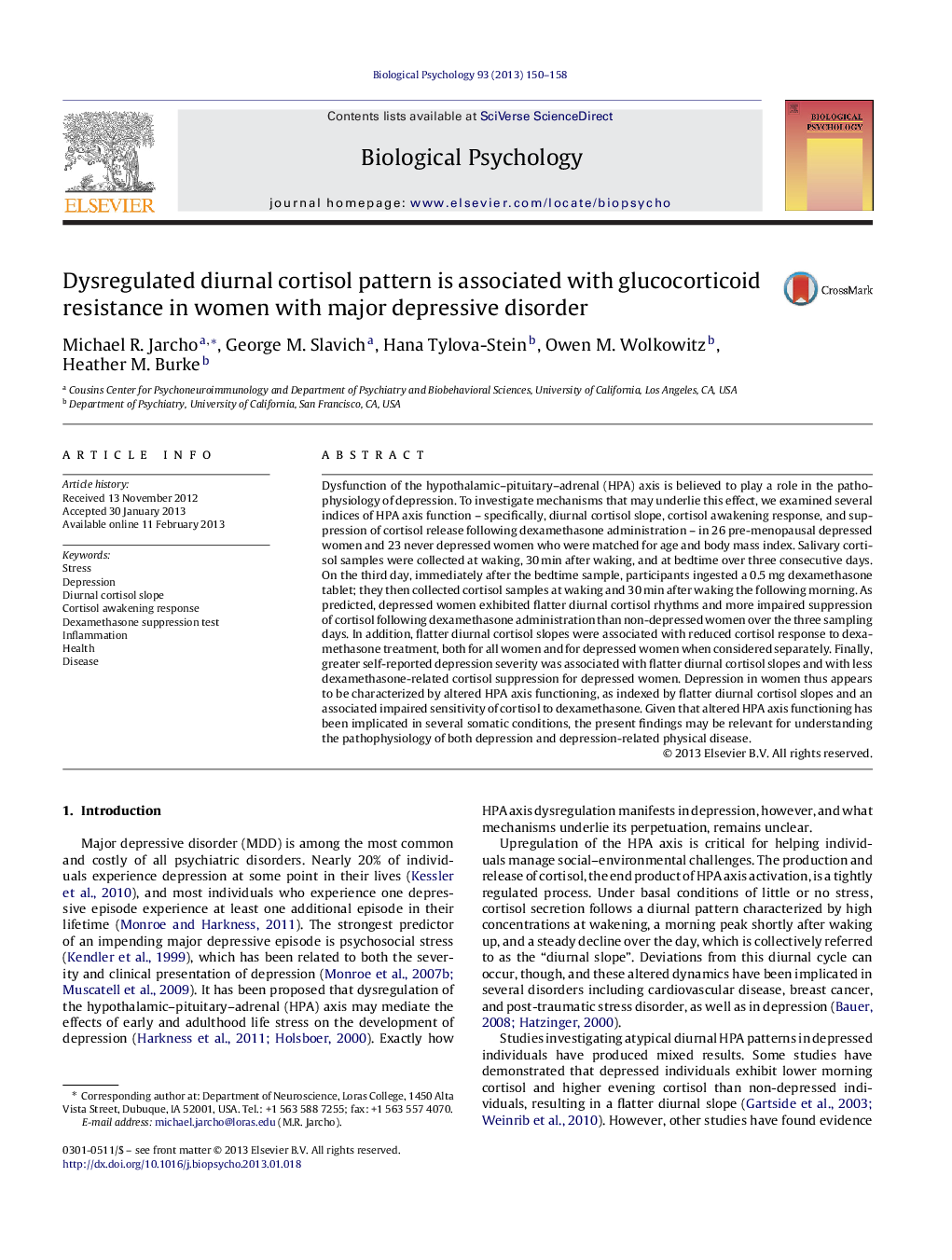| کد مقاله | کد نشریه | سال انتشار | مقاله انگلیسی | نسخه تمام متن |
|---|---|---|---|---|
| 920994 | 920744 | 2013 | 9 صفحه PDF | دانلود رایگان |

Dysfunction of the hypothalamic–pituitary–adrenal (HPA) axis is believed to play a role in the pathophysiology of depression. To investigate mechanisms that may underlie this effect, we examined several indices of HPA axis function – specifically, diurnal cortisol slope, cortisol awakening response, and suppression of cortisol release following dexamethasone administration – in 26 pre-menopausal depressed women and 23 never depressed women who were matched for age and body mass index. Salivary cortisol samples were collected at waking, 30 min after waking, and at bedtime over three consecutive days. On the third day, immediately after the bedtime sample, participants ingested a 0.5 mg dexamethasone tablet; they then collected cortisol samples at waking and 30 min after waking the following morning. As predicted, depressed women exhibited flatter diurnal cortisol rhythms and more impaired suppression of cortisol following dexamethasone administration than non-depressed women over the three sampling days. In addition, flatter diurnal cortisol slopes were associated with reduced cortisol response to dexamethasone treatment, both for all women and for depressed women when considered separately. Finally, greater self-reported depression severity was associated with flatter diurnal cortisol slopes and with less dexamethasone-related cortisol suppression for depressed women. Depression in women thus appears to be characterized by altered HPA axis functioning, as indexed by flatter diurnal cortisol slopes and an associated impaired sensitivity of cortisol to dexamethasone. Given that altered HPA axis functioning has been implicated in several somatic conditions, the present findings may be relevant for understanding the pathophysiology of both depression and depression-related physical disease.
► Women with depression exhibit flatter diurnal cortisol slope indicative of hypothalamic–pituitary–adrenal axis dysregulation.
► Women with depression exhibit dampened dexamethasone response, indicative of glucocorticoid resistance.
► Diurnal slope and response to dexamethasone were correlated.
► Increased severity of depression was associated with flatter diurnal slope and reduced response to dexamethasone.
Journal: Biological Psychology - Volume 93, Issue 1, April 2013, Pages 150–158